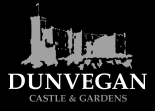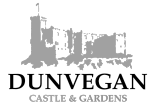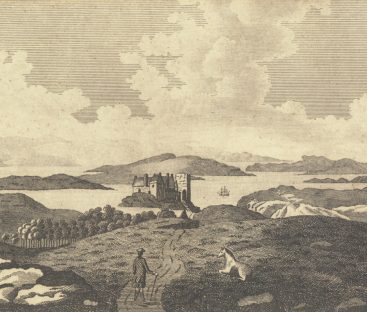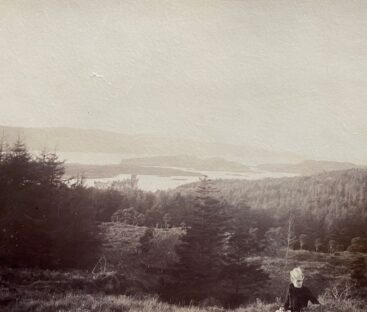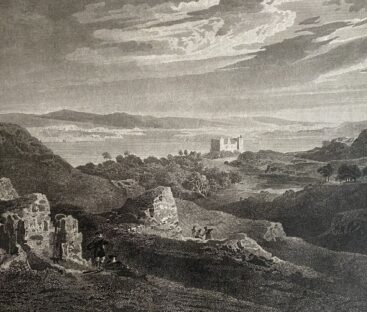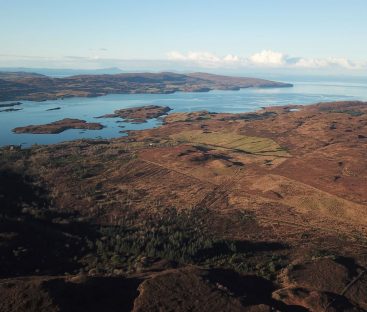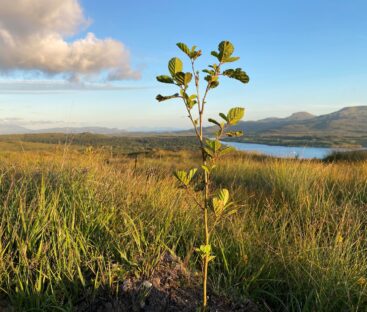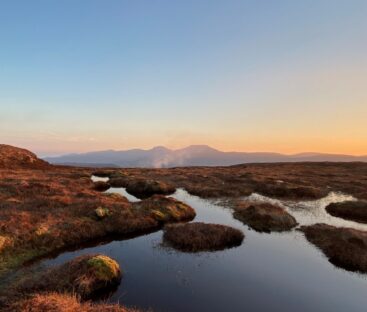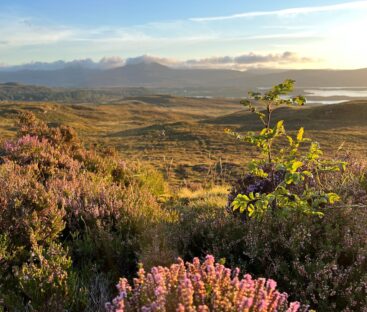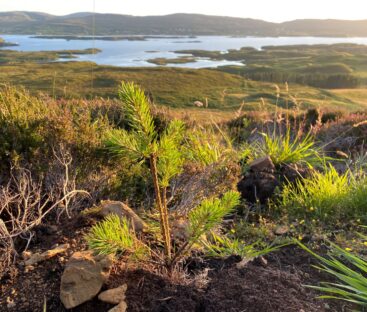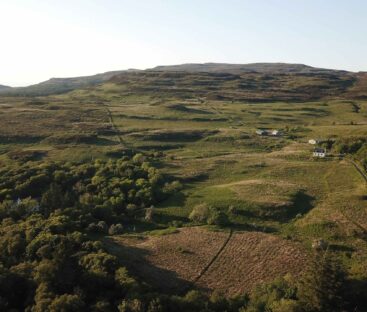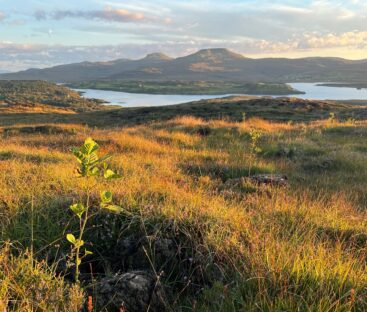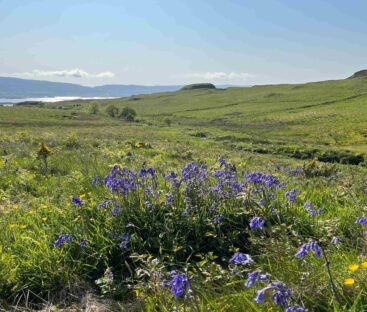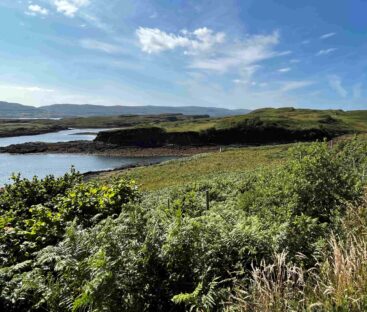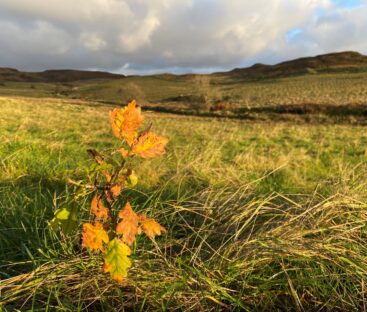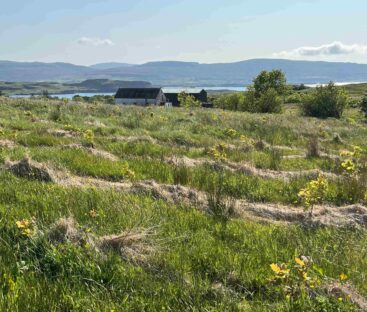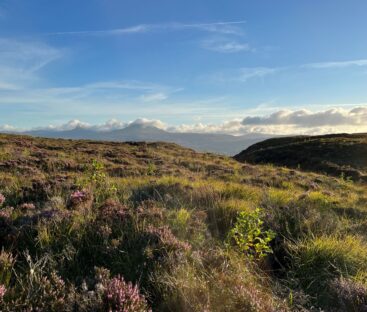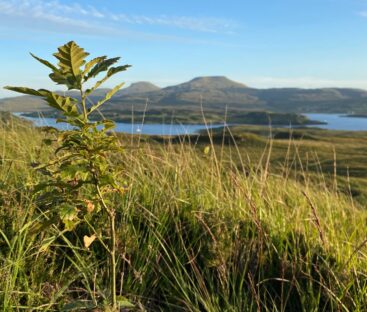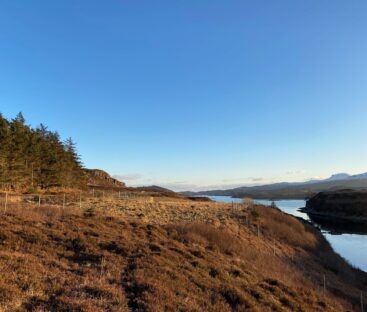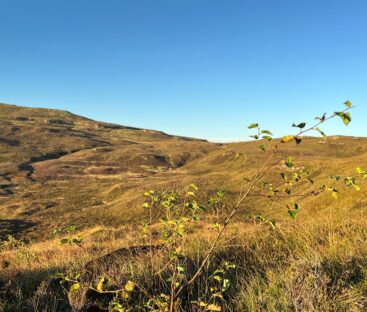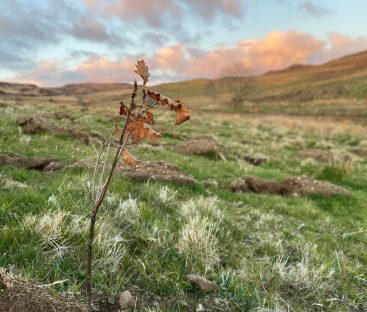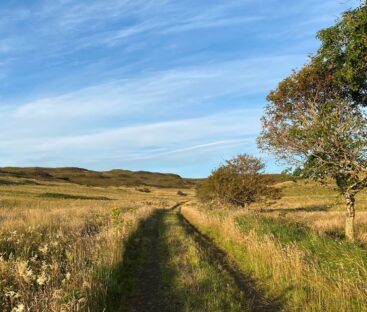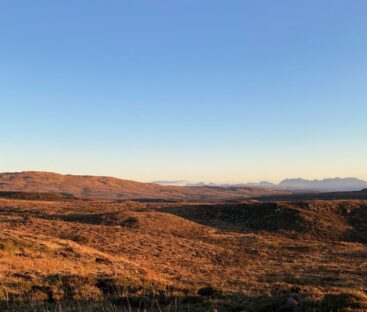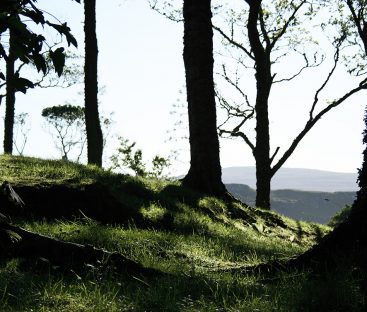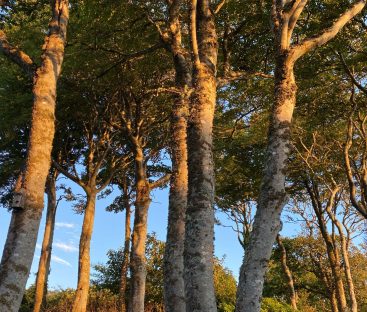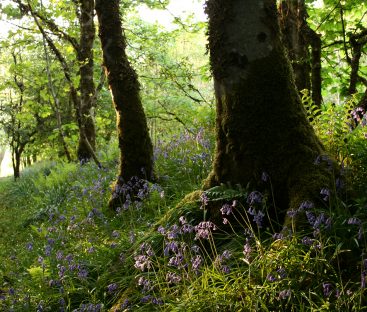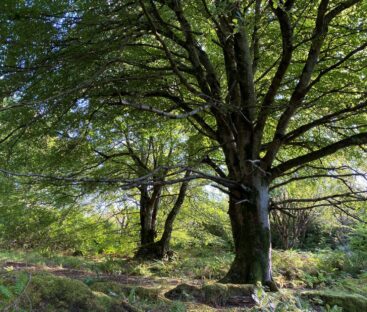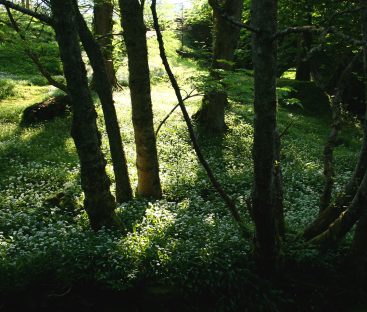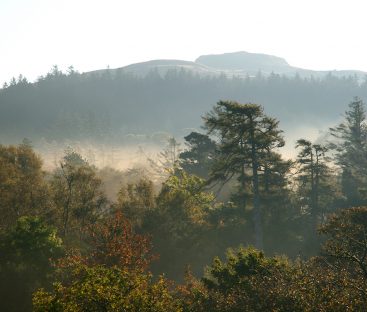Trees have been missing from the Isle of Skye’s landscape for centuries. From 1500 onwards, the last remnants of Skye’s temperate rainforest and native woodlands were felled to provide fuel, building materials and grazing for cattle and later sheep which were introduced in the late 18th century. Today, native woodland covers just 2% of the island’s land area with only a few isolated patches of Atlantic temperate rainforest clinging on in remote areas. It was only in the 1750s that some native trees were planted at Dunvegan Castle by the 22nd Chief to provide a seed source to supply local people with trees to plant around their houses for shelter. It was not until the 1860s that the more extensive woodlands around the castle were planted. Over the last few decades, the MacLeod Estate has replanted large areas of native woodlands to replace the monoculture coniferous plantations of the post-war years. In 2020, the Estate executed an ambitious plan to treble the size of the existing native woodlands surrounding Dunvegan Castle with the support of an EU and Scottish government grant-aided native woodland creation scheme at Totachocaire farm. This is the first phase of the Estate’s nascent rewilding plans which will focus on doing what it can to create the right conditions for rare temperate rainforest habitats to return and flourish, to repair broken ecosystems and reverse biodiversity loss which is critical if we are to combat climate change.
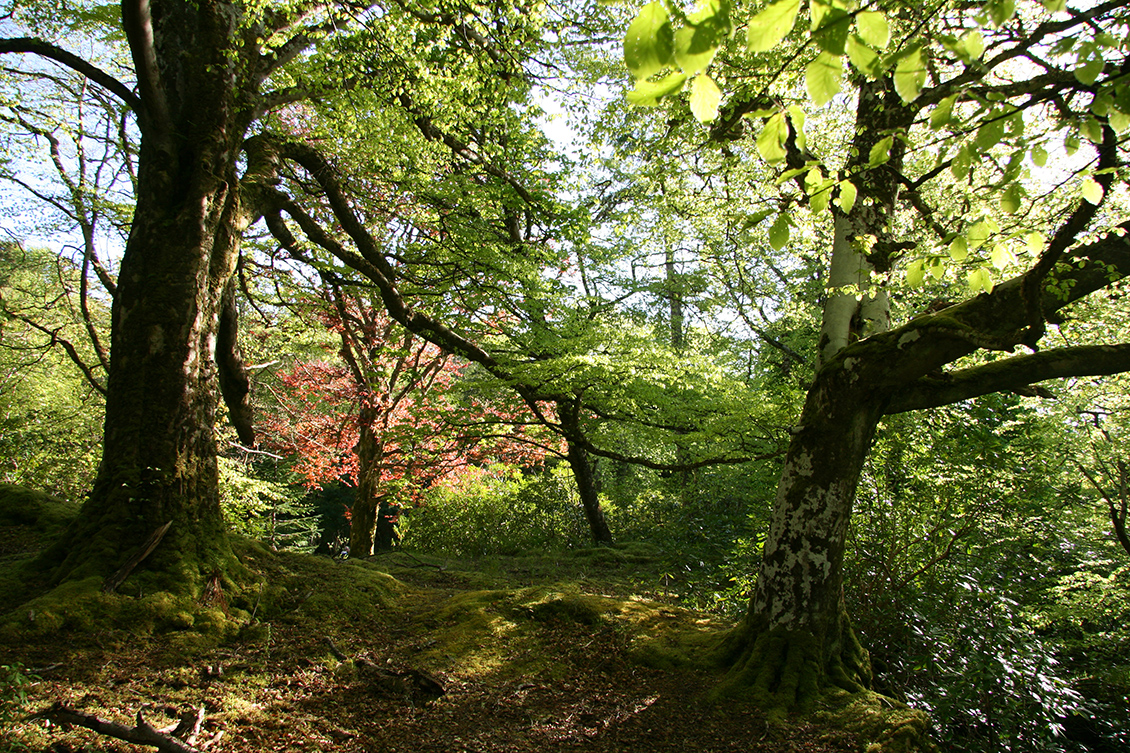
The Dunvegan native woodland creation scheme is the most ambitious project of its kind on Skye to date, with the first phase transforming just under half of Dunvegan’s former home farm, Totachocaire, into a 240 hectare (593 acre) native woodland that has trebled the size of the existing contiguous woodlands around Dunvegan Castle & Gardens. A total of 372,000 saplings were planted in 2021, with different mixed species to suit the land’s terrain and ecology including Sessile Oak, Scots pine, Aspen, Alder, Downy Birch, Hawthorn, Willow, Rowan, Hazel, Wild Cherry and Silver Birch. Once the woodlands are established in a few years time, this will create an extensive biodiverse habitat to support the reintroduction of a number of native species including beavers, pine martens and red squirrels. The carbon offset is estimated to exceed 64,000 tons over a 95-year period. This is in addition to the 80,000 native trees planted by the estate in 2010 which replaced a monoculture coniferous plantation dating back to the post-war years. Gradually over time, this woodland will transform into a temperate rainforest.
Of the Estate’s 41,000 acres, only around 3,500 acres (8.5%) is considered to be of sufficient quality for further native woodland creation schemes due to exposure and the majority of the land comprising moorland and peatland of varying depths. As a result, the Estate’s future rewilding plans will focus on reducing deer density to 3-5 per sq km in some areas to encourage natural regeneration, alongside degraded peatland restoration plans that will support the Scottish Government’s Climate Change Plan targets to restore 250,000 hectares (618,000 acres) of peatland nationally by 2030.
